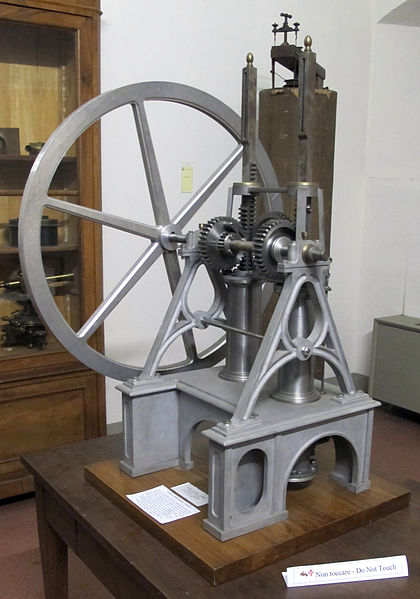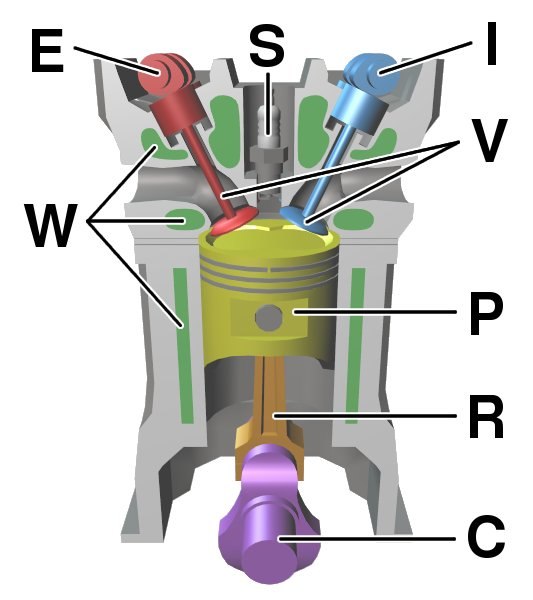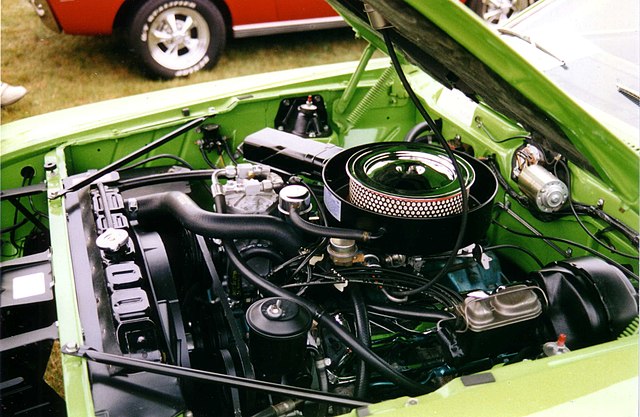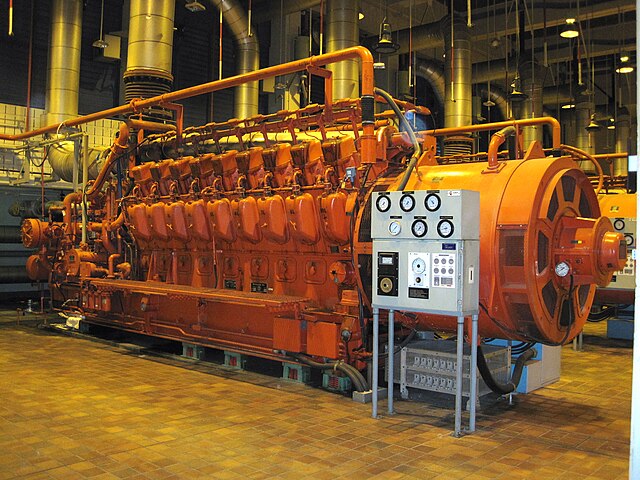Father Eugenio Barsanti, also named Nicolò, was an Italian engineer, who together with Felice Matteucci of Lucca invented the first version of the internal combustion engine in 1853, Florence. Their patent request was granted in London on June 12, 1854, and published in London's Morning Journal under the title "Specification of Eugene Barsanti and Felix Matteucci, Obtaining Motive Power by the Explosion of Gasses", as documented by the Fondazione Barsanti e Matteucci.
Eugenio Barsanti
Model of the Barsanti-Matteucci engine in the Osservatorio Ximeniano in Florence
Internal combustion engine
An internal combustion engine is a heat engine in which the combustion of a fuel occurs with an oxidizer in a combustion chamber that is an integral part of the working fluid flow circuit. In an internal combustion engine, the expansion of the high-temperature and high-pressure gases produced by combustion applies direct force to some component of the engine. The force is typically applied to pistons, turbine blades, a rotor, or a nozzle. This force moves the component over a distance, transforming chemical energy into kinetic energy which is used to propel, move or power whatever the engine is attached to.
Diagram of a cylinder as found in an overhead cam 4-stroke gasoline engine: C – crankshaft E – exhaust camshaft I – inlet camshaft P – piston R – connecting rod S – spark plug V – valves. red: exhaust, blue: intake. W – cooling water jacket gray structure – engine block
Reciprocating engine of a car
Diesel generator for backup power
Bare cylinder block of a V8 engine






